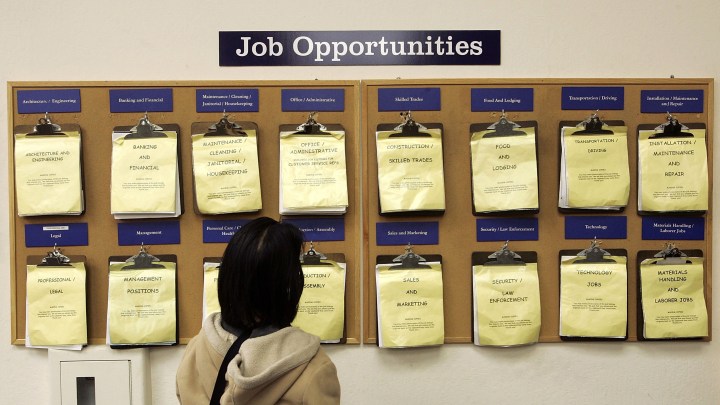
Nearly half of states could not cover unemployment insurance in a recession
Nearly half of states could not cover unemployment insurance in a recession

The U.S. unemployment rate is near a 50-year low, at 3.6%, and initial claims for state unemployment insurance benefits are also at near-historic lows.
But in the event of recession, whether or not the government is prepared to support laid-off workers financially is largely up to the states, which provide unemployment benefits to workers who qualify.
Some states are more prepared than others, primarily because they tax employers at a level sufficient to build up ample reserves in their unemployment insurance trust funds.
Here’s how it works: States collect taxes from employers, then pay out benefits to laid-off workers from the state’s unemployment trust fund. Workers who are fired or quit are usually ineligible, as are temporary and contract workers.
State benefits typically last up to six months while the recipient is looking for work. But when the unemployment rate shoots up (as it did in the Great Recession) the federal government often extends benefits to a year or more, picking up part of the cost in a cost-sharing arrangement with the states.
Oregon is one of the best-funded states, ranking second in trust fund solvency behind Vermont, according to 2018 U.S. Department of Labor data.
“Our trust fund has been an amazing, very solvent fund,” said Isabel Joslen, an assistant division director at the unemployment insurance division at the state’s employment department. “We always have enough funds to be able to cover for about 18 months or more of unemployment.”
Joslen said Oregon’s unemployment insurance program adjusts to economic conditions, beefing up the trust fund in anticipation of rising unemployment.
“The more claims we pay out, the more the tax rates are higher,” she said. “When we pay less claims, the tax rate goes down. So, good economy, lower tax rates. Bad economy, higher tax rates.”
Oregon’s unemployment rate is about 4.1%. Recently part of that number is 54-year-old Michael Potts, who used to work at Amazon as a driver.
“I just got laid off last week, so I’m currently looking for work,” said Potts, “and doing a little bit of studying for a CDL — commercial driver’s license.”
Potts made $16.25/hour and was expecting to get about half that much in unemployment benefits. He said he’d been laid off before, in recent years, and “having that unemployment helped me out tremendously. I would have lost my apartment and started living on the streets. It’s very harsh.”
Benefits help businesses stay alive as well as workers, said Oregon state economist Nick Beleiciks.
“They help stabilize local economies,” he said. “So employers are really interested in keeping workers nearby for when the economy starts to recover again. And they also need something to make up for the lost sales in the area due to people’s incomes dropping.”
But there can be trouble when unemployment insurance funds run out, said Michelle Evermore, policy analyst at the National Employment Law Project.
“States went into the last recession with not enough money in their unemployment trust funds, and so they had to borrow a great deal of money.”
Thirty-five states had to borrow from the U.S. Treasury to cover extended benefits. California just paid its $10.2 billion debt off in 2018.
And many of the state unemployment insurance funds that borrowed—including California, New York, Colorado and Ohio—still aren’t solvent now, after years of economic expansion and very low unemployment. According to the Labor Department, 23 states still don’t have enough saved in their trust funds to cover a year of benefits in a typical recession.
Evermore said the states could reform their systems and make employers pay higher UI taxes.
“The most obvious step that many states can take is to increase the wage base. So right now, many states are still only taxing the first $7,000 of wages. And that hasn’t increased since 1983,” she said.
Some states now look good on paper, Evermore pointed out, with enough money in their trust funds to remain solvent in a recession. But they’ve achieved that by reducing UI benefits to cut costs. Florida, for instance, has cut the maximum amount and duration of benefits, and tightened eligibility rules so fewer unemployed workers qualify.
“These reductions have happened in a time of economic expansion,” said Evermore. “And so we won’t really see a macroeconomic effect until the next recession kicks in and broad numbers of people see that benefits have been cut in their state.”
There’s a lot happening in the world. Through it all, Marketplace is here for you.
You rely on Marketplace to break down the world’s events and tell you how it affects you in a fact-based, approachable way. We rely on your financial support to keep making that possible.
Your donation today powers the independent journalism that you rely on. For just $5/month, you can help sustain Marketplace so we can keep reporting on the things that matter to you.












